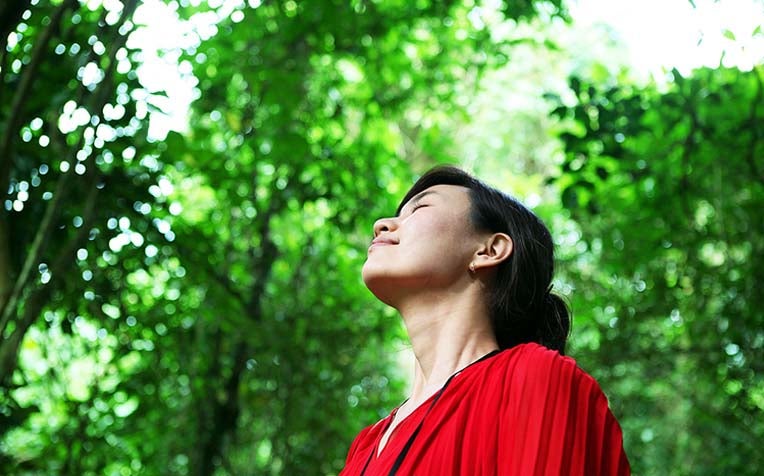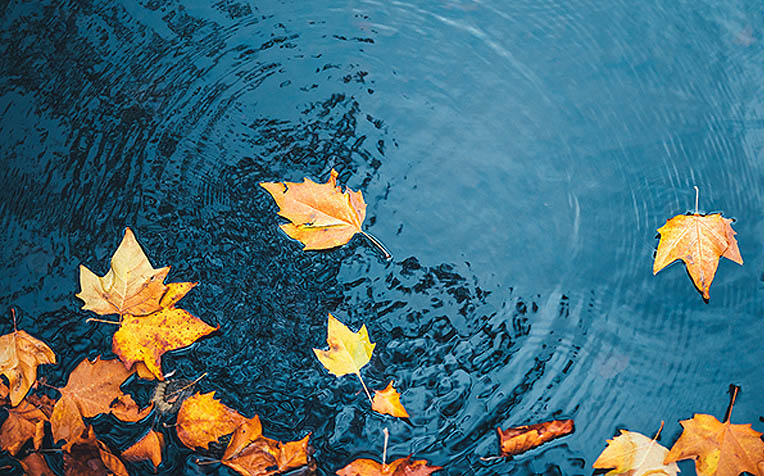
Visualisation and visual imagery, when mastered, can be powerful enough to distract you from pain, tension or problems.
Information and video provided courtesy of the Government of Western Australia - Centre for Clinical Interventions (CCI).
What is visual imagery?
While some people like tensing and relaxing, others can often become more relaxed by simply imaging a beautiful place.
This technique uses your mind to distract you from pain, tension, or problems. It asks you to create images in your mind that are so captivating, so rich in detail, and so all-consuming for your mind, that you get lost in the images your mind creates.
How to visualise
![]() Start the exercise by sitting or lying in a comfortable position and deep breathing. Unlike the tense-relax technique, the focus is not on your body but on a pleasant image.
Start the exercise by sitting or lying in a comfortable position and deep breathing. Unlike the tense-relax technique, the focus is not on your body but on a pleasant image.
![]() You will want to decide where you want to go in your image before starting. Some people like to have several destinations in mind since, at first, it may be difficult to stay interested in any one image for very long.
You will want to decide where you want to go in your image before starting. Some people like to have several destinations in mind since, at first, it may be difficult to stay interested in any one image for very long.
![]() You can leave your eyes open or you can shut them. Most people prefer to close their eyes when creating a mental image.
You can leave your eyes open or you can shut them. Most people prefer to close their eyes when creating a mental image.
![]() Your image can take you anywhere of your choosing. For example it could be a beach, a mountain retreat, a hiking trail, your own back yard, a fishing pond, a clean kitchen with tasty cinnamon buns baking, a favorite restaurant, a computer generated virtual reality, or a psychedelic ‘60’s-like landscape. Whatever you choose, try to make it peaceful, and calming.
Your image can take you anywhere of your choosing. For example it could be a beach, a mountain retreat, a hiking trail, your own back yard, a fishing pond, a clean kitchen with tasty cinnamon buns baking, a favorite restaurant, a computer generated virtual reality, or a psychedelic ‘60’s-like landscape. Whatever you choose, try to make it peaceful, and calming.
Vision: The moss, the trees, animals, the sun, the soil, leaves
Smell: Smell the moist earth, the heavy scent of green vegetation
Sounds: Hear the birds, sticks cracking, animals moving, creeks
Feel: The cool moist air, the cool soil, the warm sun in a clearing
Taste: The fresh water from a creek, a ripe berry, a sweet apple
Start off with 5 minutes then gradually expand your imagery time to about 15 to 20 minutes per day.
Visual imagery requires a lot of concentration and a lot of practice in order to fully master concentrating on your image and not being distracted by internal bodily discomfort or external noises.
After you have become skilled at using this technique, you can repeat parts of it in a shorter format (i.e., a few seconds or a few minutes) when you need a quick relaxation break.
How to do the visual imagery relaxation exercise
Purpose of the exercise: To relax your body without the use of drugs
Goal of the exercise: To use visualization and all your senses to produce relaxation
Your imagery experience will have four parts:
Entering the image
The journey to a private place in the image
Experiencing the private place, and finally
Returning and ending the imagery
Step 1: Enter your image

As you enter your image notice the view.
What is in the distance?
What do you hear?
Are there any immediate smells or tastes?
Reach out and touch the things in your immediate environment.
How do these things feel?
What is under your feet? How does this feel?
Are there any new smells or sounds?
What is the temperature? Make it comfortable.
Look above you. What do you see?
What do you hear now?
Identify a path along which you will travel as you journey through this place.
Step 2: The journey

As you begin your journey take several additional deep breaths.
Your journey should take you deeper and deeper into your image.
As you travel, be keenly aware of the sights passing by you.
As you travel, be aware of new sounds that occur.
As you travel, be aware of the temperature, and feelings under your feet.
As you travel, be aware of the things you can touch and examine their texture.
As you travel, be aware of smells and tastes that enter your image.
Continue on your journey until you find a place of rich sensory experiences. This is your private place.
Step 3: The private place

Once you reach your private place take several additional deep breaths.
Your private place should make you feel calm, peaceful, and filled with sensory pleasure.
In your private place, be keenly aware of the sights around you.
In your private place, be aware of new sounds that occur.
In your private place, be aware of the temperature, and feelings under your feet.
In your private place, be aware of the things you can touch and examine their texture.
In your private place, be aware of smells and tastes that enter your image.
Stay in your private place for several minutes allowing your imagination to run free with pleasurable images.
Step 4: The return home

Before you start to return home, do the following:
Notice how your body feels
You will want to return to this feeling in the future
Try and recall the best aspects of your journey and of your private place. You will want to return to these in the future.
Prepare to leave by counting backwards from 3 to 1.
3 – Become aware of your surroundings (location, people, noises)
2 – Move your feet, legs, hands, rotate your head
1 – Open your eyes feeling re-energized, refreshed, and relaxed
Hear the audio clip below to practice the visual imagery relaxation exercise
Ref: K21


















 Get it on Google Play
Get it on Google Play